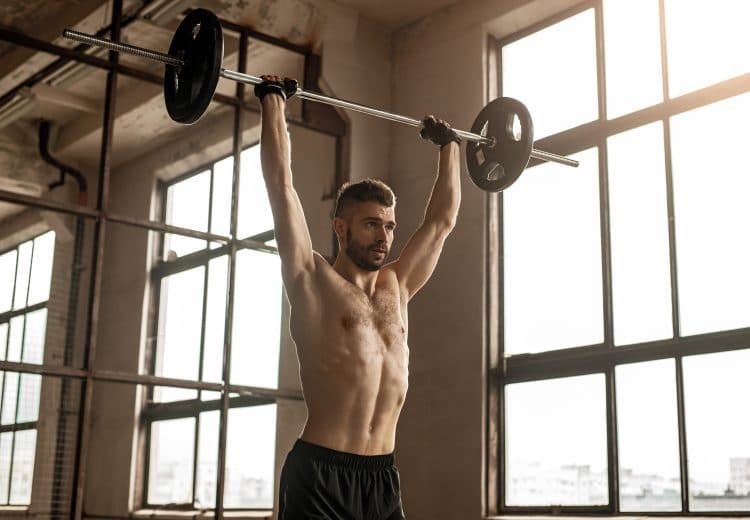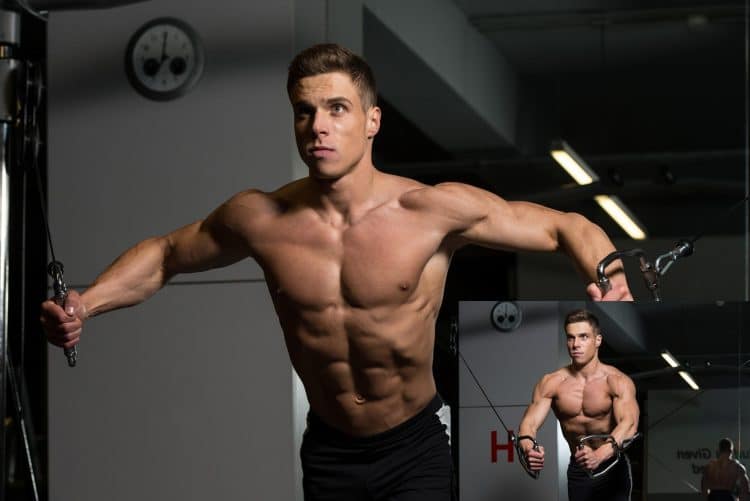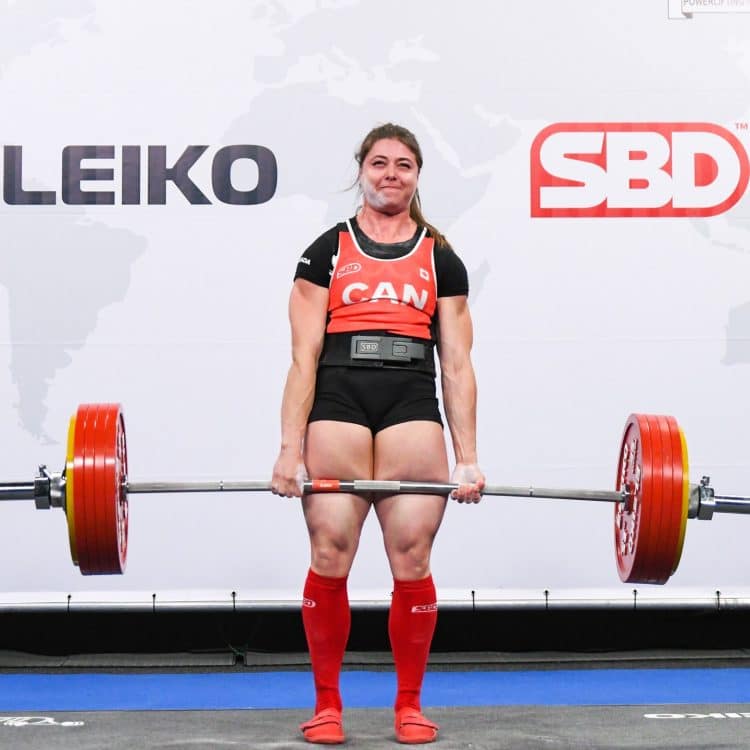Strength training exercises are generally categorized as compound and isolation movements. In my seven-year experience as a personal trainer, most lifters, especially beginners, want to know if sticking with one can bring better results.
Compound movements are multi-joint lifts that train multiple muscle groups. On the other hand, isolation exercises focus on a single muscle at a time.
In this article, we’ll go over compound and isolation movements in detail, their variations, and benefits before arriving at a final verdict, so sit tight.
Compound vs. Isolation Exercises — Comparison
Here is an overview of compound and isolation exercises:
What are Compound Exercises?

Compound exercises, also known as functional exercises, are multi-joint lifts that work multiple muscle groups at the same time. These exercises are great for building overall strength and muscle mass and improving functionality and mobility. (1)
The overhead press is a functional exercise that primarily focuses on your shoulders but also results in a core, triceps, upper pec, and trap engagement.
Level Up Your Fitness: Join our 💪 strong community in Fitness Volt Newsletter. Get daily inspiration, expert-backed workouts, nutrition tips, the latest in strength sports, and the support you need to reach your goals. Subscribe for free!
While the military press is an overall shoulder mass and strength builder, it also improves your core strength, stability, and balance, which can translate to better performance in day-to-day activities.
What are Isolation Exercises?

Isolation exercises are single-joint lifts that focus on a single muscle at a time, hence training your muscles in ‘isolation’. By focusing on one muscle group, a lifter eliminates the chances of secondary muscles taking over, making the target muscles work harder.
These movements are great for building muscle mass, conditioning, and fixing muscle imbalances.
Isolation exercises are incredibly effective at helping achieve a muscle pump. Single-joint movements are usually performed at the end of a training routine.
In the compound vs. isolation exercises debate, many lifters argue that since the single-joint lifts focus exclusively on the working muscle, they should be better for building muscle mass and definition.
Compound exercises like the bench press, deadlift, and squat are great for building overall strength and, therefore, are the three main lifts in powerlifting.
Novice bodybuilders contend that multi-joint lifts are great for powerlifters, weightlifters, strongmen, and CrossFitters as these athletes lift heavier for more reps. However, bodybuilders should concentrate on exercises that help them zero down on a muscle group and achieve muscle hypertrophy.
Honestly, it is a pretty solid argument and one that most broscientists can never navigate unhurt.
Compound vs. Isolation Exercises — Best Exercises
Here are the best compound and isolation movements you should try the next time you’re in the gym.
Best Compound Exercises
Given below are a few multi-joint lifts for different muscle groups:
Best lower body compound exercises:
Best upper body compound exercises:
The best full-body compound exercises:
Best Isolation Exercises
Check out the best single-joint lifts for different muscle groups:
Best chest isolation exercises:
Best back isolation exercises:
Best shoulder isolation exercises:
Best arms isolation exercises:
Best legs isolation exercises:
Best abs isolation exercises:
Must Read: 86 Best Isolation Exercises By Muscle Groups
Compound vs. Isolation Exercises — Benefits
To better analyze compound and isolation exercises to figure out which are better for you, let’s go over the benefits of each.
Benefits of Compound Exercises
Adding multi-joint exercises to your exercise arsenal entails the following benefits:
1. Build Strength
Since compound exercises involve multiple muscle groups, you can generally lift heavier on multi-joint exercises than on similar isolation lifts, which can help improve overall strength. It is also why powerlifters and strongmen stick to compound movements in their training.
2. Improve Functionality
It is no secret that performing compound movements can improve your performance in real-life activities. Exercises like the squat, deadlift, overhead press, etcetera require a good degree of mobility which carries over to your daily movement patterns.
Furthermore, multi-joint exercises involve a greater range of motion than isolation lifts, resulting in greater muscle fiber recruitment.
3. Add Muscle Mass
While compound and isolation lifts help build muscle size, compound movements are more efficient in this regard as they work multiple muscle groups at once.
4. Build a Strong Foundation
If your goal is to lift heavy and build muscle or strength, your workouts should maintain a healthy balance between compound and isolation lifts. Multi-joint movements help build a rock-solid foundation on which you can double down using isolation exercises.
5. Burn Calories
Compound moves engage multiple muscle groups and usually involve heavier weights, which can help burn more calories than isolation exercises.
Furthermore, compound exercises like burpees can fire up your heart rate, which can help burn through stored glycogen reserves.
Level Up Your Fitness: Join our 💪 strong community in Fitness Volt Newsletter. Get daily inspiration, expert-backed workouts, nutrition tips, the latest in strength sports, and the support you need to reach your goals. Subscribe for free!
6. Improve Coordination
Some multi-joint movements are more complex than others and require years of practice to master. Compound movements like the power clean, clean and jerk, power snatch, and clean and press can help build and improve your coordination.
Benefits of Isolation Exercises
Performing single-joint movements in a workout can help:
1. Fix Muscle Imbalances
Most compound exercises are bi-lateral exercises, meaning they work both sides at once. However, if you are dealing with muscle imbalances, you’ll have to train one side at a time, which is where isolation exercises shine. Adding unilateral isolation exercises to your training regimen can help fix muscle and strength imbalances.
2. Saves Time
Since isolation exercises focus on a single muscle group, you won’t have to lift as heavy as you would on a compound lift. Plus, machines save time, and your rest times between sets will be shorter.
3. Improve Aesthetics
Because isolation exercises target just one muscle group at a time, you can focus on your form and technique. For example, performing a preacher curl can help build your biceps peak and separation.
4. Achieve a Muscle-Ripping Pump
Isolation exercises involve a strict form and relatively shorter range of motion than multi-joint movements, which can help induce a muscle ripping pump. Most lifters like to end their workouts with an isolation exercise in hopes of stepping out of the gym with a solid pump.
5. Reduce Risk of Injury
As isolation exercises comprise a shorter and strict range of motion, most lifters lift lighter on single-joint lifts than the compound lifts, significantly reducing the chances of injury.
6. Great for People Dealing with Injury
For most people dealing with an injury, compound movements are a strict no-no as they involve several moving parts. On the other hand, isolation exercises can help an individual train around their injuries.
Compound vs. Isolation Exercises — Final Verdict
You’ll often hear gym bros say compound exercises are better than isolation exercises or vice-versa. However, the truth is that things have vastly changed over the years, and the answer will depend on your goals.
While the compound vs. isolation exercises debate would have been simple to address in the 1990s, it is not the case anymore with strength sports like CrossFit gaining a cult following. Plus, we are noticing an uptick in strongman, powerlifting, and Olympic lifting audiences, which makes the argument even more complex.
While answering the compound vs. isolation exercises question, most articles assume that the reader is a bodybuilding fan. However, we think this presumption is flawed.
What is right for a rookie bodybuilder might not be most optimal for a powerlifting or strongman aspirant. Hence, we will explore the most effective compound and isolation training split for athletes across different disciplines.
Best Approach for Bodybuilders

Bodybuilding is a game of aesthetics. If you are a competitive bodybuilder (or aspire to be one), it doesn’t matter how much you can bench or squat. You’ll be scored on your size, symmetry, quality, conditioning, and shape.
An ideal training split for a bodybuilder should include:
- Compound exercises: 50%
- Isolation exercises: 50%
However, the compound and isolation split should change depending on your current physique. If you lack size in a particular area, let’s say your back, your back workout should include 60 percent compound exercises and 40 percent isolation.
On the other hand, if your right arm is bigger than the left or your arms are not proportional to your lower legs, your workouts could be 60 percent isolation and 40 percent compound.
Must Read: Understanding How Men’s Open Bodybuilding Competitions are Judged and Scored
Best Approach for CrossFit
Although CrossFitters mostly focus on compound lifts, they are more jacked than powerlifters, weightlifters, and strongmen because of their high-intensity training style and diet.
A typical CrossFit WOD consists of:
- Compound exercises: 90-100%
- Isolation exercises: 0-10%
Check Out: How Many Calories Does CrossFit Burn?
Best Approach for Powerlifters, Weightlifters, and Strongmen

Powerlifters, weightlifters, and strongmen focus on lifting as heavy as possible for a relatively lower number of reps than bodybuilders — strongmen can be an exception.
While most bodybuilders train for muscle hypertrophy, other strength sports athletes follow diverse training regimens and usually stick to compound exercises.
However, adding isolation exercises to the mix can help strengthen your supporting muscles, resulting in a better performance on compound lifts and a decreased chance of injury.
This is what a prospective compound and isolation training split for powerlifters, weightlifters, and strongmen could consist of:
- Compound exercises: 75-80%
- Isolation exercises: 25-20%
Wrapping Up
If your goal is to build muscle mass and improve aesthetics, your training regimen should have a healthy mix of compound and isolation exercises. Powerlifters, weightlifters, strongmen, and CrossFitters can experiment with the compound and isolation split until they hit the right balance.
While compound exercises can help you build functional strength, isolation lifts can fix muscular imbalances. Hence, it is time we move from the compound vs. isolation exercises debate to the compound and isolation exercises discussion.
References
- Gottschall, J. S., Mills, J., & Hastings, B. (2013). Integration core exercises elicit greater muscle activation than isolation exercises. Journal of strength and conditioning research, 27(3), 590–596. https://doi.org/10.1519/JSC.0b013e31825c2cc7










